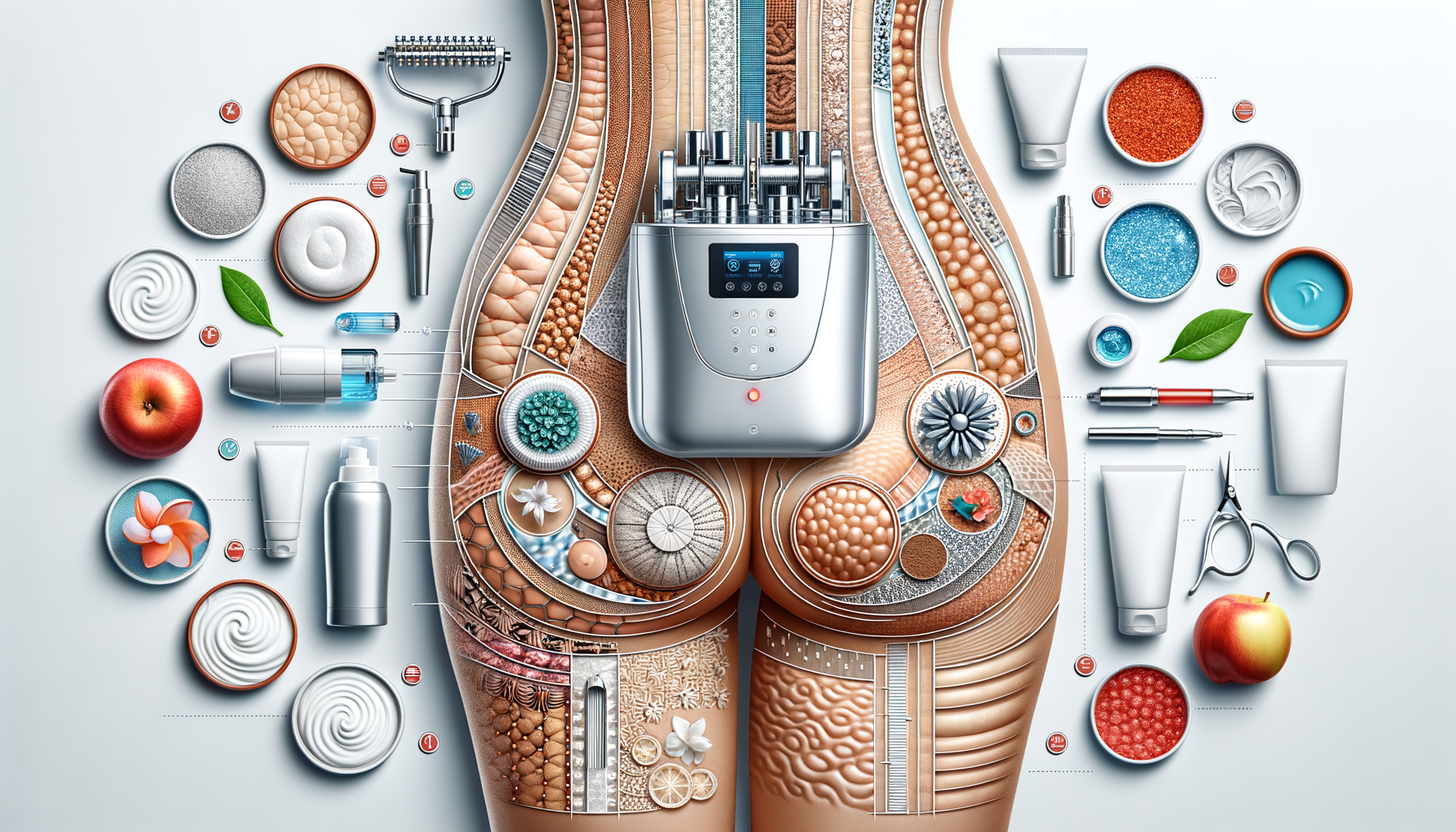
Exploring Effective Cellulite Reduction Treatments
Understanding Cellulite: Causes and Concerns
Cellulite is a common condition that affects a significant portion of the population, particularly women. It is characterized by a dimpled appearance of the skin, often compared to the texture of an orange peel. This condition primarily affects the thighs, buttocks, and abdomen. The cause of cellulite is multifaceted, involving factors such as genetics, hormonal changes, and lifestyle choices. While not a medical concern, cellulite can impact self-esteem and body image, making it a topic of interest for many seeking cosmetic solutions.
Genetically, some individuals are predisposed to cellulite due to their body’s natural structure and fat distribution. Hormonal factors, particularly estrogen, play a role in the development and severity of cellulite. Lifestyle factors, such as diet and exercise, can influence the appearance of cellulite, although they are not sole determinants. Understanding these causes helps in addressing the issue with appropriate treatments.
Given the widespread nature of cellulite, the market has seen a surge in treatments aimed at reducing its appearance. While invasive procedures exist, many seek non-invasive options due to their lower risk and minimal recovery time. These treatments focus on improving skin texture and reducing the visibility of cellulite without the need for surgery.
Radiofrequency Treatments: A Popular Choice
Radiofrequency (RF) treatments have emerged as a popular non-invasive option for cellulite reduction. These treatments use energy waves to heat the deep layers of the skin, stimulating collagen production and improving skin texture. As collagen is a key component of skin elasticity, its increased production can lead to a smoother appearance, diminishing the look of cellulite.
One of the advantages of RF treatments is their ability to target specific areas without damaging surrounding tissue. This precision makes RF a favored option for those looking to address cellulite in localized regions. Sessions are typically quick, lasting around 30-60 minutes, and require minimal downtime, allowing individuals to resume their daily activities shortly after treatment.
While results can vary based on individual factors such as skin type and the severity of cellulite, many report noticeable improvements after a few sessions. However, maintaining results often requires follow-up treatments, as the effects of RF are not permanent. The popularity of RF treatments continues to grow, supported by their reputation for being both effective and convenient.
Ultrasound Therapy: Harnessing Sound Waves
Ultrasound therapy is another non-invasive method gaining traction for cellulite reduction. This technique uses focused sound waves to break down fat cells beneath the skin, thereby reducing the appearance of cellulite. The process involves targeting the affected area with high-frequency sound waves, which penetrate the skin and disrupt fat cells, eventually leading to their natural elimination by the body.
Ultrasound therapy is particularly appealing due to its non-invasive nature and the fact that it does not require any incisions or anesthesia. This makes it an accessible option for many individuals seeking a less invasive approach to cellulite reduction. Sessions typically last between 30 to 60 minutes, with patients often experiencing little to no discomfort during the procedure.
Results from ultrasound therapy can be gradual, with improvements becoming more noticeable over several weeks as the body processes the disrupted fat cells. Like other non-invasive treatments, multiple sessions may be necessary for optimal results, and maintenance treatments can help sustain the improvements. This method’s growing popularity is attributed to its safety profile and the lack of significant recovery time.
Laser Treatments: Precision and Efficacy
Laser treatments offer another effective non-invasive option for tackling cellulite. These treatments utilize laser energy to penetrate the skin, targeting fat cells and stimulating collagen production. The dual action of breaking down fat and enhancing skin elasticity makes laser treatments a compelling choice for those looking to improve the appearance of cellulite.
One of the main advantages of laser treatments is their precision. The ability to target specific areas allows for tailored treatment plans that address individual concerns. Moreover, the stimulation of collagen production can lead to longer-lasting results, as the skin becomes firmer and more resilient over time.
While laser treatments can be more costly than other non-invasive options, their efficacy is well-documented, with many patients reporting significant improvements. The procedure is generally well-tolerated, with minimal discomfort and downtime. As with other treatments, multiple sessions are often needed to achieve desired results, and periodic maintenance sessions can help preserve the improvements.
Conclusion: Choosing the Right Treatment for You
In the realm of non-invasive cellulite reduction, there are several effective options to consider. Each treatment offers unique benefits, from the collagen-boosting effects of radiofrequency and laser treatments to the fat-disrupting capabilities of ultrasound therapy. When choosing a treatment, it’s important to consider factors such as budget, treatment goals, and personal preferences.
Consulting with a qualified professional can provide valuable insights into which treatment might be the most suitable for your needs. They can assess your specific situation and recommend a plan that aligns with your expectations and lifestyle. While non-invasive treatments offer promising results, managing expectations and understanding the need for maintenance is crucial for long-term satisfaction.
Ultimately, the decision to undergo cellulite treatment is a personal one, influenced by individual goals and comfort levels. With the variety of non-invasive options available, there is potential for everyone to find a solution that helps them feel more confident in their skin.


